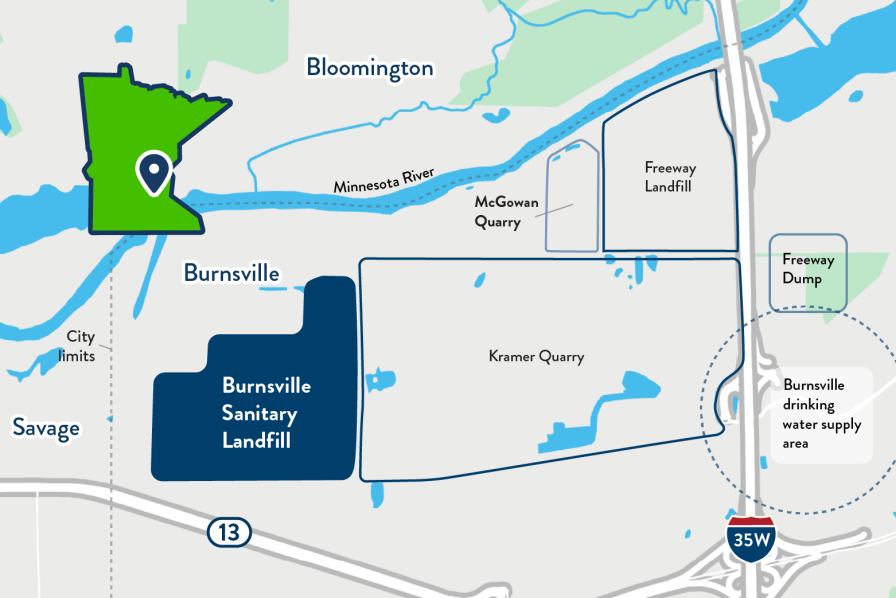The Burnsville Sanitary Landfill (BSL) will expand to accommodate the growing municipal waste needs of the Twin Cities metro area. The expansion is part of the landfill’s long-term plan to extend the useful life of the landfill to 2062.
Our role
In November 2022, the MPCA issued a 10-year solid waste permit that allows the landfill to expand by approximately 13 million cubic yards and to grow taller by 92 feet. MPCA permitting staff used data and findings from a supplemental environmental impact statement (SEIS) to inform the solid waste permit.
Location
Owned and operated by Waste Management, the Burnsville Sanitary Landfill is located on 362 acres within the city limits of Burnsville in Dakota County. While adjacent land use to the east, south, and west is predominantly commercial and industrial, the landfill’s northern boundary borders the Minnesota River floodplain.

Project information
The landfill has operated at this location since the early 1960s and received its initial solid waste permit from the MPCA in 1971. It accepts multiple types of solid waste, including residential and commercial waste, industrial waste, and construction and demolition debris, primarily from Hennepin and Dakota counties.
While evaluating solid waste disposal solutions in the metro area, the MPCA identified the Burnsville Sanitary Landfill as one of four sites that could demonstrate the need for additional solid waste capacity. Each of those landfills must have approved solid waste permits in place before they can expand.
In 2019, the Burnsville Sanitary Landfill applied for a reissued solid waste permit that would allow it to reconfigure and reduce the ultimate waste footprint from 216 to 204 acres and allow for an increase in height from 821.5 to 1,082 feet.
Several measures in the approved permit address key environmental risks identified in the SEIS. Those measures include:
- sampling for 1,4-dioxane and per- and polyfluoroalkyl substances (PFAS)
- monitoring of PFAS through MPCA’s PFAS monitoring plan
- special permit conditions that require additional analyses to investigate future scenarios where the neighboring Kraemer Quarry stops pumping groundwater
- restrictions on filling over new historical unlined waste disposal areas until these analyses are completed and approved by the MPCA
- an updated contingency action plan and corresponding financial assurance amounts to address potential future negative impacts
The permit also requires features that will help the landfill prepare for Minnesota’s changing climate. One of them, a flood control berm, will be constructed to an elevation of 722 feet, which is more than two feet above the highest recorded flood elevation for the Minnesota River (719.4 feet in 1965). Another is a stormwater management system designed for a 100-year rainfall event, as opposed to the 25-year rainfall event that current rules require.
The MPCA issued a five-year air quality permit for the landfill in March 2023.
South metro landfill expansions
In addition to the Burnsville Sanitary Landfill, three other metro-area landfills are in the process of expanding or under consideration for expansion to help manage the mountains of trash that metro-area residents and businesses generate. The Pine Bend Landfill is in the process of increasing its capacity for municipal solid waste by nearly 2.4 million tons. The Dem-Con Landfill in Shakopee has applied for a permit to receive as much as 627,244 tons. While the Rich Valley Landfill beside the Pine Bend Landfill could increase capacity by 893,899 tons, it has yet to submit a permit application to do so.
Each of those facilities may need to complete the environmental review and permitting process. If for some reason a facility isn’t permitted to accept additional garbage, the tonnage will be reallocated to other facilities capable of accepting the waste.